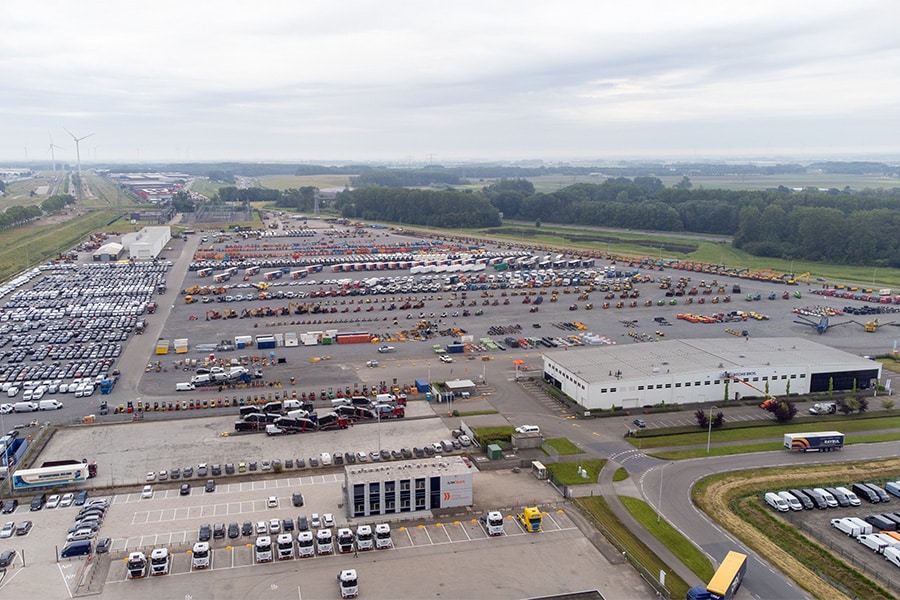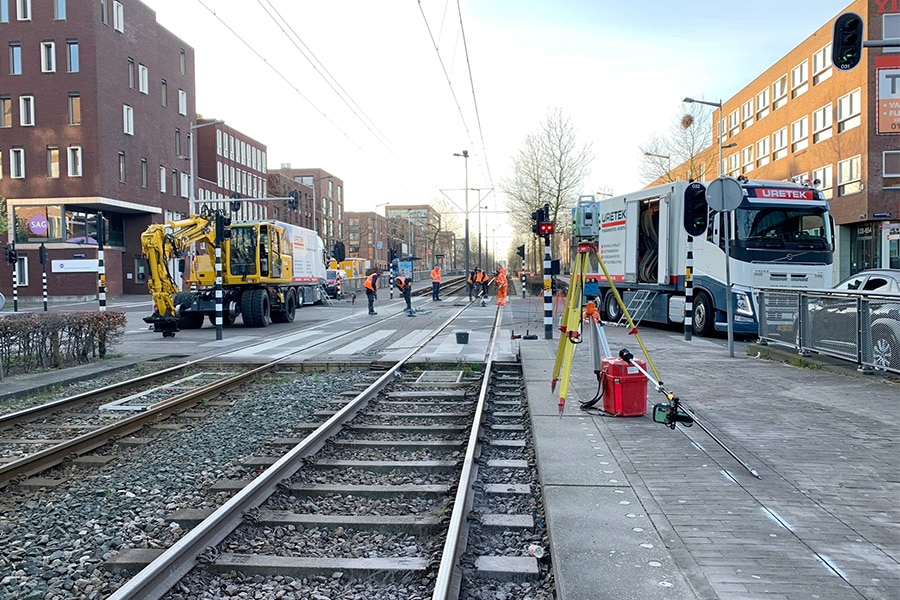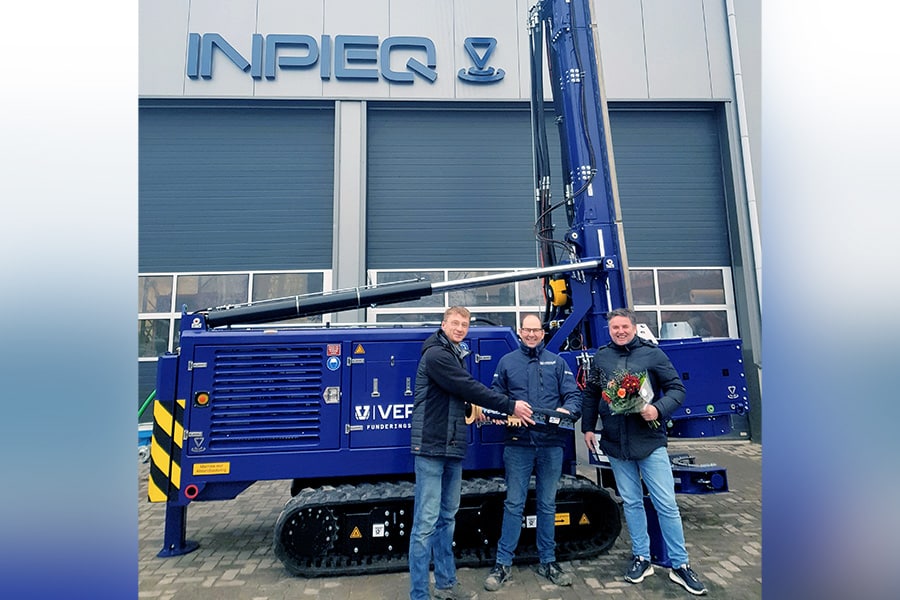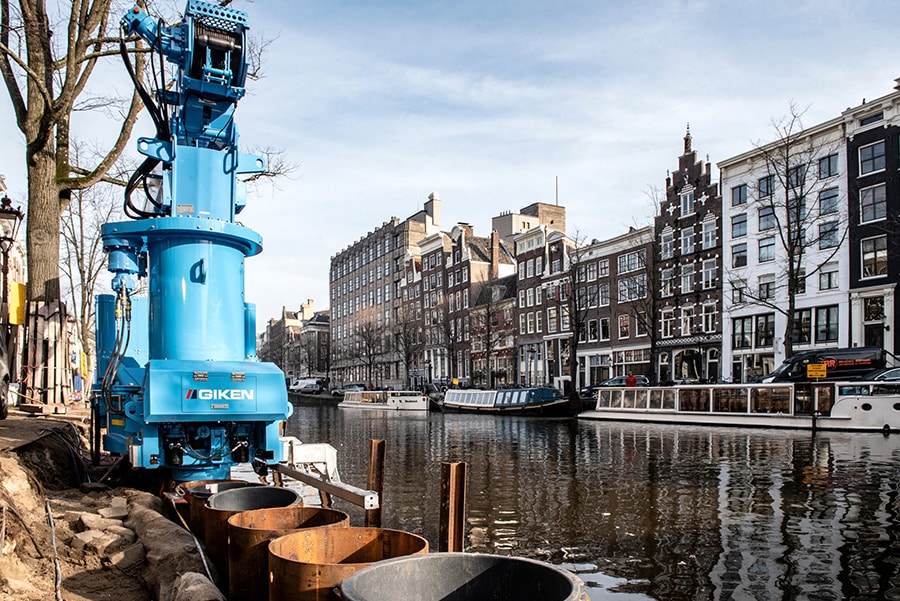
InnovationPartnership Quay Walls: cheaper,faster and with less disruption
One of the three consortia chosen by the City of Amsterdam to replace inner-city quay walls is G-Force. In it, Gebroeders de Koning, Van Gelder and Giken Europe join their innovative forces. A consortium that has now succeeded in successfully completing the so-called Research and Development phase, including a pilot project.
Edwin Boonstoppel, project manager at Gebroeders de Koning explains, "With the Bridges and Quay Walls program, the City of Amsterdam is pursuing a major acceleration compared to the situation in the decades before, in which quay walls were replaced only sparsely. In 2018 the tendering procedure was launched, from 2020 we, as one of the chosen parties, took our innovative idea further to an implementation-ready design, which we then demonstrated in a pilot project on the Singel."

The three partners in G-Force worked on the pilot project with a number of suppliers and subcontractors within the framework set by the municipality. They are ArcelorMittal for the supply of the steel tubular piles, De Vries-Titan for the installation of the grout anchors, the Rutte Group for the demolition work of the upper part of the existing quay, the electric transport by water and the fabrication of concrete elements with masonry, and Lommers Welding for the welding work.
G-Force is realizing a minimum of 3,300 meters of quay over the next eight years including the 204 meters established during the pilot.
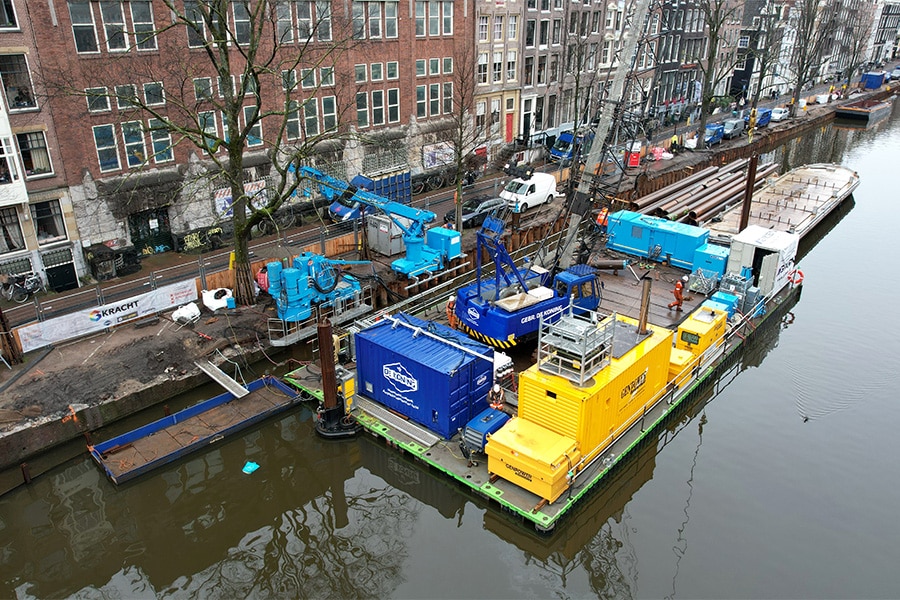
Technical knowledge
Edwin: "As a contractor, Gebroeders de Koning builds quay walls, bridges, tunnels and viaducts on the border of land and water. To quickly explain the relationship within G-Kracht: we realize the quay wall ourselves and all the work around the quay wall is done by Van Gelder."
Mark Geertman, environment manager at Aannemingsmaatschappij Van Gelder explains, "We specialize in both above-ground and underground infrastructure, respectively the road paving and sewerage, cables and pipes. We have a lot of experience with multi-year maintenance in the municipality of Amsterdam. Among other things, we distinguish ourselves in environmental management."
Job Vaessen, business development manager at Giken Europe BV: "We specialize in pressing steel tubular piles and sheet piles. From there, we also developed the so-called gyro technology to press tubular piles into the ground while rotating. A toothed ring bit is welded to the bottom of the tubes that drills through all existing obstacles. There is no displacement of soil in the process; it remains in the tube. Gebroeders de Koning has been a customer of ours for a long time. They asked us how we could help with this project."
Giken Europe rents the machines and provides the technical expertise. Especially for Amsterdam, the company developed a scaled-down version of the GRB system that already existed elsewhere in the world for large-scale applications. The innovation is that we have scaled down this equipment to a maximum size to enable it to be used in an inner-city context with little working and construction space. Specifically, this involves three (electric) pieces of equipment: a gyropiler, a clampcrane and a pilerunner. The ring bit was also developed and patented by Giken.
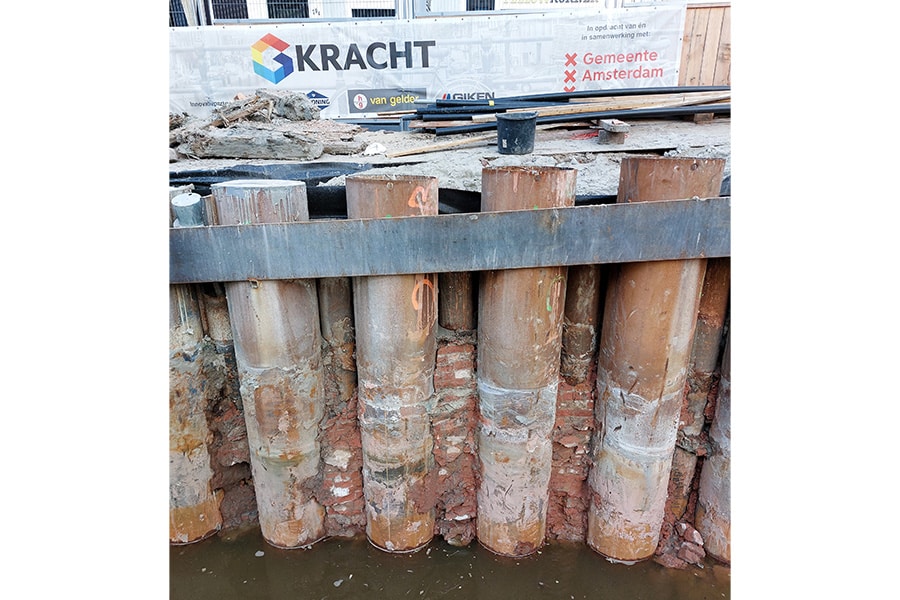
Challenge
G-Kracht faced the task of renewing quay walls in half the time, at half the cost and with half the inconvenience, compared to traditional techniques. A challenge, because this actually amounts to an eightfold improvement over the traditional method of execution. Meanwhile, G-Force has demonstrated success in these three aspects with the pilot. It represents a radical innovation.
The reduced inconvenience is already evident from the fact that both the road and the waterway will remain open as usual. Boats can pass by the work areas and the road on the wharf remains open to cars, cyclists and pedestrians.
The process begins by filling the hollow spaces under the floor of the existing quay wall. Due to the propeller movements of tour boats, sand washes away under the wall over the years, creating hollow spaces in many places. Filling these spaces prevents subsidence in the future.
The top piece of quay wall will be removed to just above the water. The cover stones will be reused, so they will return later. Then comes Giken's Gyropress, which turns and presses steel tubular piles into the ground. Tubes with a diameter of 500 mm placed center-to-center at 750 mm, leaving a 250 mm gap open. A clampcrane indicates the tubes to the Gyropress. Both pieces of equipment run over the already placed tubes and therefore do not stand in the water. The system works very flexibly regardless of the shape of the quay. The tubular piles have a length of 14 or 22 meters and are placed in a staggered arrangement of two long piles to the second sand layer and four short ones to the first sand layer. After installing the piles, the stability of the walls is guaranteed in an unloaded condition (without traffic).
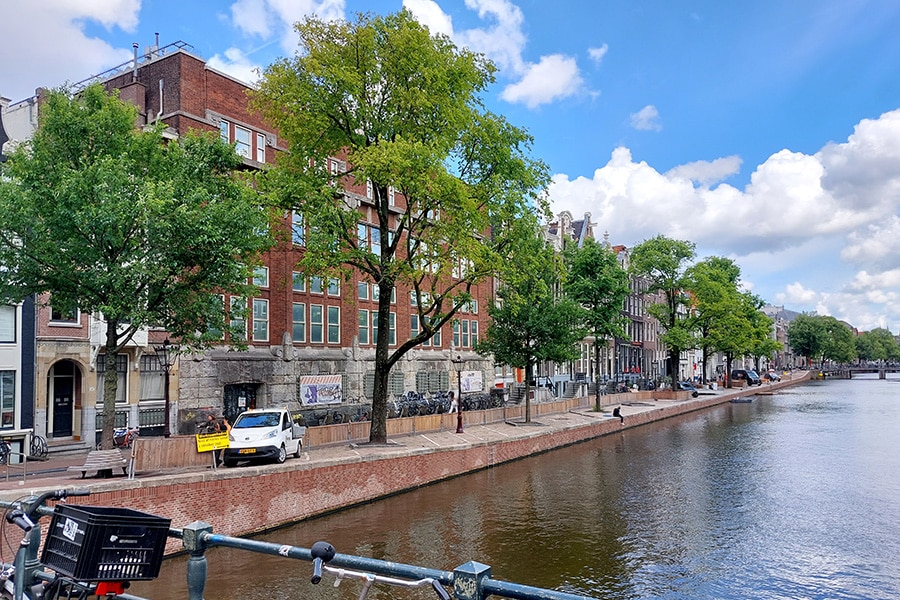
Innovate during the process
The next step involves installing short, small piles in the landside gaps. Ground pressure pushes these small tube piles against the large ones, creating a complete seal. Holes are drilled in one out of every five piles, after which a filter structure is inserted into the pipe, with the aim of keeping the groundwater level at the same level as the water in the moat. The wall thus becomes soil-tight but permeable.
At the pilot, Lommers Welding then started installing the anchor purlin. This is welded in the work as a horizontal H-profile, into which the heads of the tubular piles are incorporated. In this way, the purlin follows the alignment of the quay, both horizontally and vertically. The anchors placed behind the structure are reconnected with it. De Vries-Titan drilled these into the ground at a steep angle to the rear, keeping the anchors in front of the facade line of the buildings. This is a requirement from the client.
A good example of constant innovation during the process: low quays will almost certainly eliminate the need for anchors in the future.
Then the last piece of the old quay wall will be removed. Within two days, the Rutte Group constructed the entire appearance of the new quay in the form of prefabricated elements on which the masonry has already been applied. Only the connecting strips were still bricked up on site. Van Gelder then placed the cover stones (reused) and repaired the paving after which the parking spaces were reopened to traffic.
Mark: "We get compliments from local residents that we are working with such low noise and low vibration. And the trees along the canals remain standing throughout the process, a form of climate-adaptive construction."
Job adds: "The equipment has all been developed with zero emissions. We are extremely ahead in the Netherlands in terms of electrification, as much as ten to fifteen years ahead of other countries. If sufficient power is available on site, we can renew our quays emmission-free." If it can be done in Amsterdam, it can be done anywhere.
